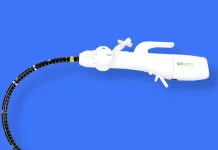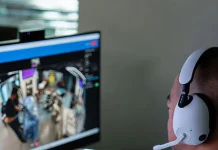Irina Nazarova, marketing director of MemoryMD/Brain Scientific, explains the development of the paediatric NeuroCap, and the need for such devices.
It may not seem all that apparent, but the paediatric market has a steady need for EEG devices in the same way the adult market does. It is crucial to target, identify and treat neurological disorders as early as possible, in hopes of curbing their damage before adulthood sets in; so, it is an unfortunate reality that so many paediatric physicians have little to no access to affordable, sanitary and efficient EEG devices befitting their patient load.

Children suffer from a wide array of neurological disorders that range from seizures, sleep issues, brain infections and, most commonly, epilepsy. Though it is not oft thought of as an issue that plagues children, the Pediatrics in Review Journal has cited epilepsy as one of the most common neurological disorders found in children and could lead to dangerous seizures if left undetected. Additionally, EEG testing can help diagnose children with ADHD, as children with the disorder now make up 42% of all children in the United States, according to Child and Adolescent Psychiatry. Perhaps, most importantly, EEG testing can be instrumental in improving autism diagnoses in children, so, when all of these needs are considered, it sounds like it would be quite helpful to have effective EEG testing available to paediatric physicians, but, sadly, the supply and availability is limited.

At a first glance, we did not even perceive this issue to be as much of a reality as it turned out to be. After showing off our adult sized NeuroCap at several medical technology conferences, we found that, while impressed with the results of the NeuroCap, many attendees were curious if we had a paediatric version available or at least in development. We did not, but the query was posited often enough that it became clear we needed get started on one right away.
We began work on the paediatric NeuroCap: a disposable EEG cap, that comes in the form of a pre-gelled hospital-grade EEG headset that can be applied easily and quickly by any member of a clinical staff. The fact that any such staffer can apply it is a massive help to medical staff, as with most EEGs, a special technician, whose time is quite limited, must conduct the testing with a single machine, one patient at a time. This means that patients must wait their turn for the machine to be prepared, applied and then cleaned, before the next patient can begin the process for themselves. The paediatric NeuroCap is quick, disposable, sanitary and comfortable, making what is typically a tedious, if not laborious, process a cinch for medical staff.

Perhaps the key benefit of the device is its ease of application: administering EEG testing on children is a time-consuming process, often taking about 30 minutes. Almost any physician will tell you, it is nearly impossible to get children, especially young ones to sit still for 30 minutes without any movement, especially head movement. The paediatric NeuroCap can measure a child’s head and conduct testing in as little as five minutes.
The device features 19 active EEG channels and 22 electrodes, located in accordance with the 10-20 international system. It rests comfortably on the patient’s head, quickly measures and marks it, before delivering prompt test results, making it perfect for paediatric patients in emergency rooms, ICUs, and clinics, among other treatment centres that require the use of EEGs for children.
The paediatric NeuroCap was designed in-house by a team of specialists but, as with all medical devices, there was plenty of back-and-forth between our team, the manufacturers and the medical testers. Each time the product went from one team to another it would be with them for about three or four months to make any necessary changes or conduct the necessary testing. While that all is to be expected, things got much more complicated once the pandemic arose: suddenly discussions had to be conducted through video conferencing which proved to be less efficient, the manufacturer was shut down for several months and even after they opened back up, their own supplier was then shut down, causing an even lengthier wait.
The battle against neurological disorders begins at the first symptoms and diagnoses and we believe it is best that these disorders are caught early in a person’s mental development. We look forward to continuing our work in the diagnostic device space, in hopes of further helping clinicians and patients catch wind of their disorders as early as possible.




